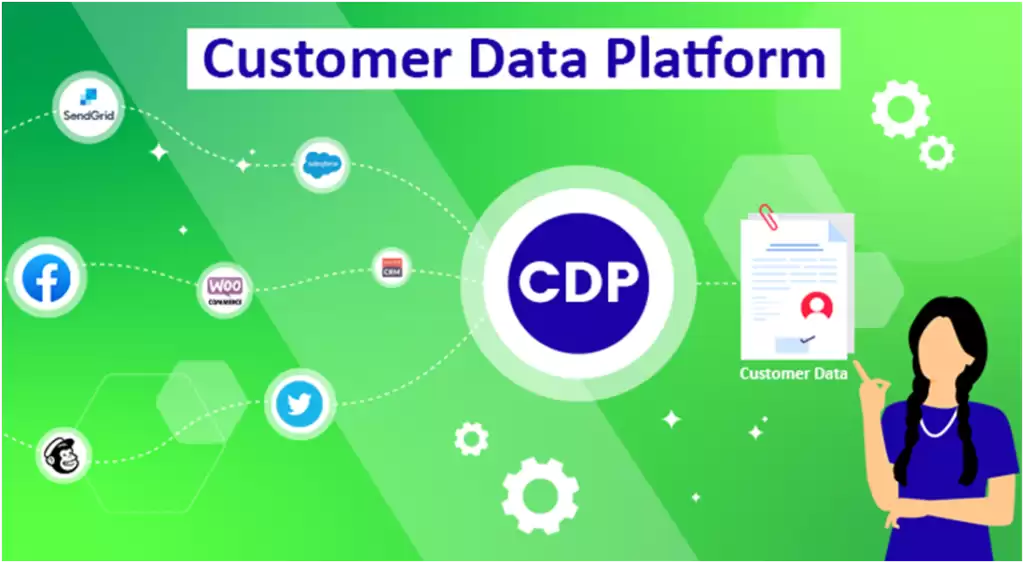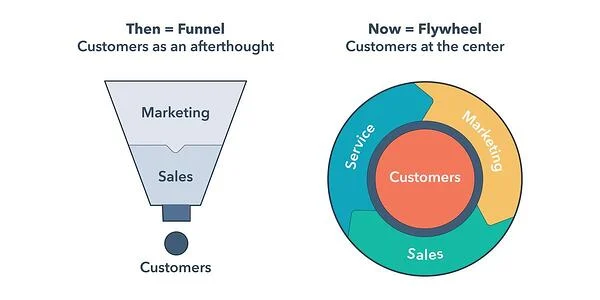Marketers First Choice?
CDP is the abbreviation for Customer Data Platform. We used it for collecting the customer’s data from various sources (internal and external) and then merging the unique identifiers for a person to create a single unified customer profile. A CDP aims to collect all customer’s touch points and interactions with your products and services. Using these individual profiles you can personalize your marketing campaigns and provide an enhanced experience to the customers. In this article, we are going to learn about CDP and will also learn some benefits associated with it.
How Does CDP Work?
We can divide the functioning of aCustomer Data Platform in four stages i.e. data collection, data unification, data activation, and customer segmentation. Let’s elaborate on each one of these.

Data Collection
From the above discussion, we concluded a CDP is the centralized place for storing the customer information from all possible touchpoints and sources. Before collecting the information you need to identify customers individually. For this, you need to collect the customer information and create a thread out of it. Let’s have a look at what kind of data sources we are talking about here.
Some most common sources are CRM (Customer Relationship Management) software, marketing platforms, social media platforms, ads, eCommerce platforms, point of sale (POS), etc. And there will be some sources from which you rarely collect data, but in this case, you will. This process of collecting customer engagement data from various sources to build a unified profile is also known as customer resolution.
All these sources have vital customer information. But since all the data was scattered, it was next to impossible to draw out something meaningful from it.
Data Unification
You have completed the task of creating the customer identities now it’s time to resolve the identities across devices. In other words, we need to link the customer’s known data with the unknown. For example, you have a known customer with their correct email address and phone number. You will link this confirmed customer data with anonymous information that the customer may have shared with you earlier.
We know this process as identity resolution and the aim is to create a single complete and unified customer identity. This will also tell you how and when a customer has been engaging with your business i.e. the complete picture of the customer journey.
Data Activation
The process of data collection and unification is done, now you need to take it into use. For this, you need to share the unified profiles of customers with the marketers so that they can use them to deliver personalized customer experiences.
Customer Segmentation
With the help of insights that you get after creating the unified customer profiles, you can segment your customers into various categories. You can create personas for your different target audiences. In addition to this, you can also track the browsing behavior, purchasing trends, and engagement rate of your leads and customers. Later, you can leverage this data to target high-value customers.
The Benefits of Customer Data Platform
Providing you with a single source of truth for the customer is not the only thing a CDP does. There are plenty of other benefits as well. Let’s have a look at them.
- Better customer data management
Customer data management is the process of collecting, cataloging, and utilizing customer data to get the desired outcome. And CDP is the tailor-made tool for this, you can acquire data from various sources and merge that data to create a unified customer profile.
- Superior customer analytics
Businesses use customer analytics to understand the behavior of their customers throughout their customer journey. It allows businesses to come up with the most effective strategy in terms of marketing, sales, customer service, and product development.
- Guaranteed data protection
Whether it’s General Data Protection Regulation (GDPR) or the California Consumer Privacy Act (CCPA), both privacy laws require companies to protect customer data. With CDP, you can control the types of data that need to be collected. So if you will not collect unnecessary data in the first place then you don’t need to worry about protecting it.
